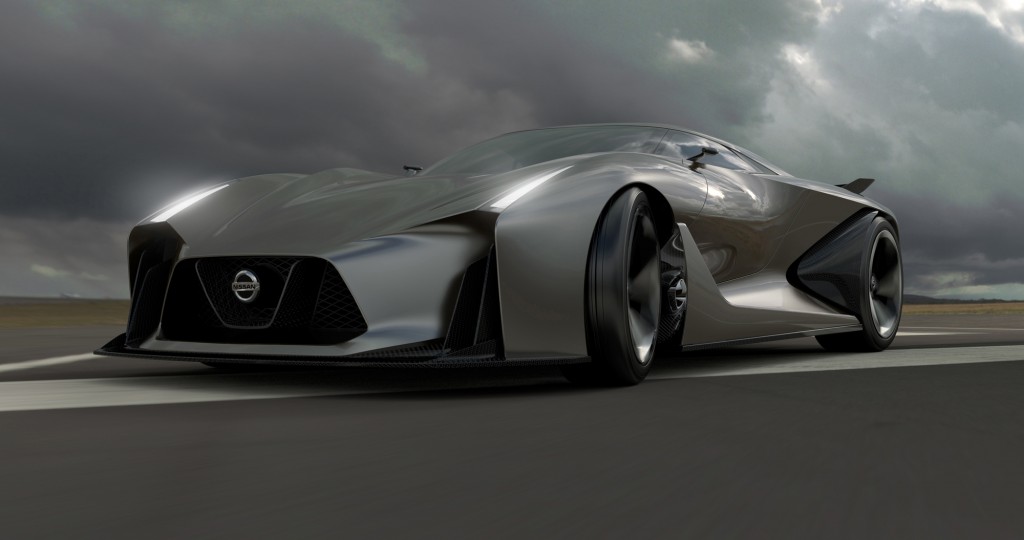The Nissan GT-R, though no longer sporting the Skyline badge, comes from a platform that critics lauded and drivers adored. The concept and subsequent redesign were unveiled at the 2001 and 2005 Tokyo Motor Shows, respectively. While car enthusiasts pined for the return of a GT-R – any G-TR! – the company brought a production version to the 2007 Tokyo Motor Show.
Hmm… We wonder if the GT-R was initially released in Japan? … Anyway…
On December 6th, 2007, the Nissan GT-R launched in the Japanese market and in the American market just seven months later. This model suffered from limited international distribution as a result of two complications: (1) the engine and rear-mounted dual-clutch gearbox were hand assembled; (2) dealerships that would offer maintenance and repair services for the GT-R required specific performance centers.
Though five years passed between the final update of the Skyline GT-R and the all-new version, it still carried the “Godzilla” nickname that Wheels, an Australian motoring publication, assigned it in its July 1989 edition. Aside from the nomenclature and engine specifications, there were virtually no other similarities between the two iterations.
Nissan embraced its high-performance car, boasting about its strength. The GT-R came equipped with a 3.8-liter VT with two turbochargers, cranking out 542 horsepower and 463 lb-ft of torque since the 2012 model (it improved with every generation). This beast could reach 60 MPH from a standstill in 3.2 seconds thanks to “launch control”: the act of deactivating VDC (Vehicle Dynamic Control), which launches the car at 4,500 RPM. Though the company denied using such language as “launch control,” Nissan’s director of product planning, John Weiner, once stated to Jay Leno that the company offers a Launch Mode.
Even with some designs and manufacturing completed in America and Europe, Nissan proclaimed that the car maintained an aura of the Orient. Shiro Nakamura, Nissan’s chief creative officer, explained that the “GT-R is unique because it is not simply a copy of a European-designed supercar; it had to really reflect Japanese culture.”
The vehicle’s architecture is the sole beneficiary of the Nissan Premium Midship platform. The assemblage is similar to that of racecars: ultra-low-tolerance jigs; aluminum for the hood, trunk lid, and outer door skins; die-cast aluminum front shock towers and inner door structures; stiffened chassis with carbon-composite front crossmember/radiator support. In 2014, the GT-R was offered with a limited Track Edition that rid it of rear seats, added a more aggressive suspension, carbon fiber air inlets, improved brake cooling, an exclusive front spoiler, and all-new black and gray leather Recaro front seats.
It still, of course, has the signature four round tail lights – some things just don’t need to change.
On the inside, the Japanese automaker sought a novel way to present its infotainment center. It contracted Polyphony Digital, creators of the Gran Turismo video game series, to design the car’s multifunctional display.
That brings us to our point … for next week’s blog… Looks like you’ll have to check back for the conclusion.





Comments are closed.